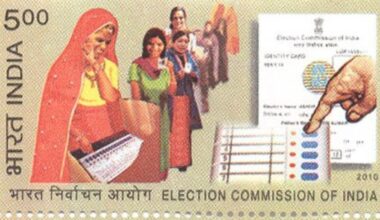Poverty, a term laden with socio-economic implications, is commonly understood as a condition characterized by the lack of resources and the inability to meet basic needs. However, a nuanced perspective emerges when we delve into the concept of multidimensional poverty. This article aims to unravel the difference between poverty and its multidimensional counterpart, exploring the various dimensions that contribute to a more comprehensive understanding of deprivation and vulnerability.
Defining Poverty
Traditional Economic Perspective
Traditionally, poverty has been primarily measured through economic indicators. Individuals or households with incomes falling below a certain threshold are deemed impoverished. This monetary approach, often referred to as monetary or income poverty, focuses on the lack of financial resources necessary to meet basic necessities such as food, shelter, and healthcare.
Limitations of a Solely Economic Measure
While income poverty provides a quantifiable metric, it falls short in capturing the intricacies of deprivation. It neglects non-monetary aspects crucial to human well-being, such as education, health, and social inclusion. As a result, a person or community might escape monetary poverty but still grapple with other forms of deprivation.
Introducing Multidimensional Poverty
Beyond the Monetary Lens
Multidimensional poverty broadens the perspective by recognizing that poverty is not solely about income. It encompasses a spectrum of interconnected deprivations that individuals or communities may face in various aspects of their lives. These dimensions typically include health, education, living standards, employment, social and gender disparities, and more.
The Alkire-Foster Methodology
The Multidimensional Poverty Index (MPI), developed by Sabina Alkire and James Foster, is a widely used tool that quantifies multidimensional poverty. It considers three dimensions – health, education, and living standards – and identifies overlapping deprivations to provide a more nuanced picture of poverty.
Key Differences
Scope of Measurement
Poverty: Primarily focuses on income or monetary indicators.
Multidimensional Poverty: Encompasses a broader spectrum of dimensions beyond income, offering a more holistic assessment.
Factors Considered
Poverty: Mainly considers financial resources and income levels.
Multidimensional Poverty: Takes into account health, education, living standards, social inclusion, and other non-monetary factors.
Interconnectedness
Poverty: Often treats dimensions as isolated factors.
Multidimensional Poverty: Recognizes the interconnected nature of deprivations, understanding that deficiencies in one dimension can exacerbate challenges in others.
Policy Implications
Poverty: Policy responses may focus on income generation and economic development.
Multidimensional Poverty: Advocates for policies addressing various dimensions simultaneously, recognizing the interdependence of well-being factors.

Illustrating Multidimensional Deprivation
Health Dimension
Poverty: Lack of financial resources may limit access to healthcare.
Multidimensional Poverty: Considers not only access to healthcare but also health outcomes, nutrition, and sanitation.
Education Dimension
Poverty: Limited financial means may hinder access to quality education.
Multidimensional Poverty: Explores not only access but also educational attainment, school enrollment, and the quality of education received.
Living Standards Dimension
Poverty: Primarily concerned with income levels affecting housing and basic amenities.
Multidimensional Poverty: Evaluates housing conditions, access to clean water, sanitation facilities, and overall living standards.
Importance of Multidimensional Poverty Analysis
Comprehensive Understanding
Recognizes that poverty extends beyond financial constraints, providing a more comprehensive understanding of deprivation.
Targeted Interventions
Enables policymakers to design interventions that address specific dimensions of poverty, tailoring solutions to the unique challenges faced by communities.
Global Development Goals
Aligns with the global development agenda, such as the United Nations’ Sustainable Development Goals (SDGs), which explicitly acknowledge the multidimensional nature of poverty and aim for holistic improvements.
Challenges and Criticisms
Measurement Complexity
Poverty: Simple to measure using income thresholds.
Multidimensional Poverty: Requires the identification and weighting of multiple dimensions, adding complexity to measurement.
Data Availability
Poverty: Relies on income data, which is often readily available.
Multidimensional Poverty: Requires comprehensive data on various dimensions, and obtaining this information can be challenging in some regions.
Subjectivity in Dimension Weights
Multidimensional Poverty: The weighting of dimensions may involve subjective judgments, leading to potential bias.
A Holistic Approach to Well-Being
In essence, the difference between poverty and multidimensional poverty lies in the breadth of factors considered. While poverty, in its traditional sense, centers on income and financial resources, multidimensional poverty paints a more intricate picture, recognizing the interconnected dimensions that contribute to overall well-being.
As we navigate the complex landscape of development and social progress, understanding and addressing multidimensional poverty becomes pivotal. By embracing a holistic approach that goes beyond monetary considerations, we can pave the way for targeted interventions, policies, and initiatives that uplift communities and individuals across diverse dimensions of their lives.










